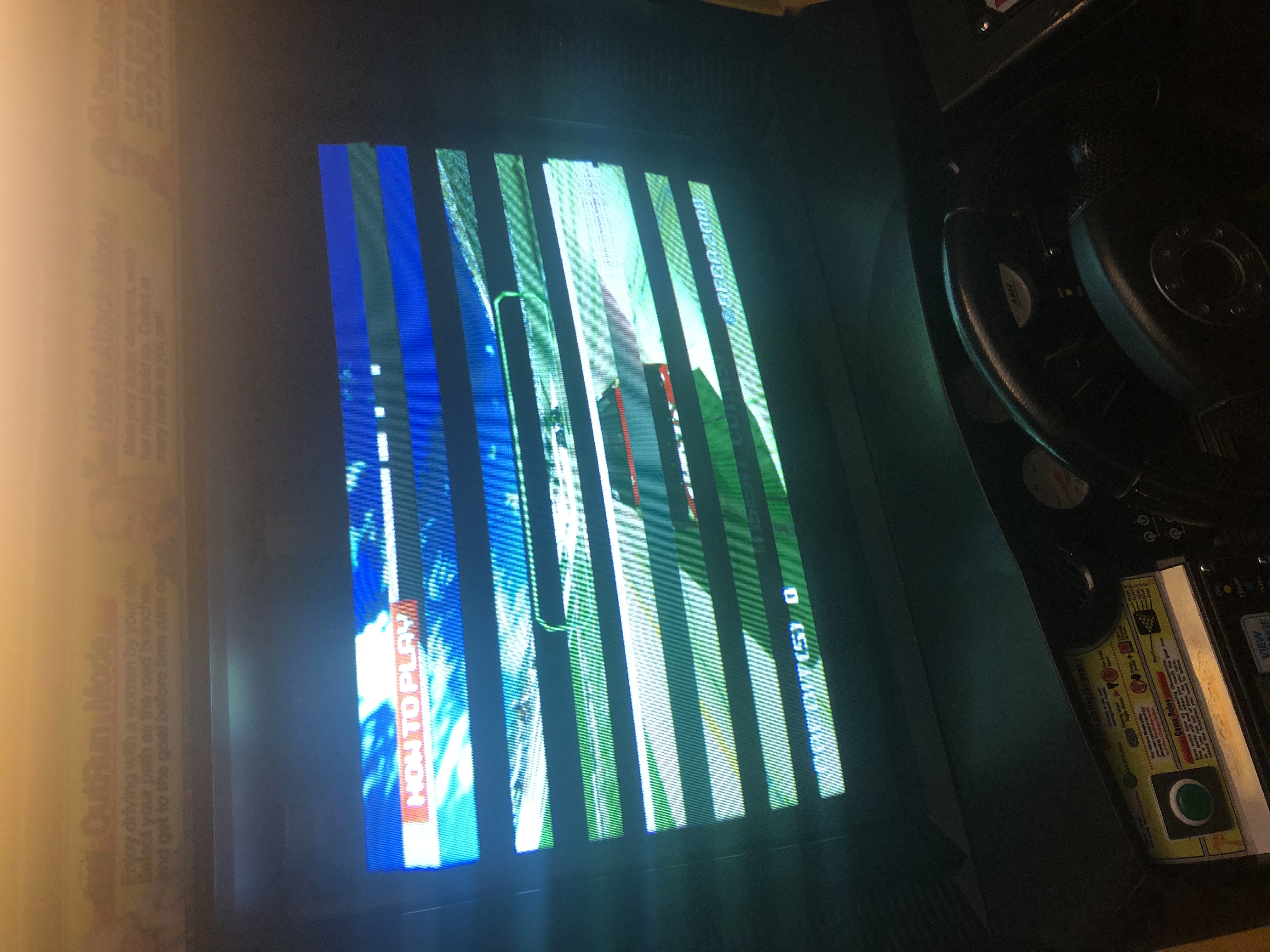good find, thanks!
I'd say it more looks like how Voodoo SLI has been working, dividing screen in horizontal strips, while PowerVRs usually divide screen in tiles like chequered flag, you may see it on photos of Naomi 2s with one of GPUs broken.
as of "is it may be something from ImgTec?" in general:
- Texture formats
PowerVRs usually supports wide set of texture formats: 1555, 565, 4444, 8888, YUV, Bump map, 4bpp or 8bpp palettes. textures may be either regular or VQ-compressed.
Hikaru have only: ARGB1555, ARGB4444, A8L8, A4 (only used by Test mode font), I4 (unused), and that's all.
doesn't looks similar, isn't it? but it's a bit similar to small set of textures mentioned there
http://textfiles.com/computers/DOCUMENT ... 3dspec.txt
- Texture addressing
PowerVRs select texture using base address in VRAM, the whole texture with optional mip levels is linear chunk of data.
Hikaru use "texture RAM" in form of x2 2048x1024pix rectangle banks. textures selected using X/Y "slot" position, where slot is 16x16pix cell.
if I not mistaken, Real3D 1000 have something similar, but 8x8pix slot/cell.
- Vertices
PowerVRs use normalized (0-1) IEEE 32bit float texture coordinates (may be cut to 16bit, dropping lower 16bits of mantissa).
Hikaru uses 16bit UVs - either 16bit integer or 12.4 fixed point depending on control bit, which really reminds Real3D 1000, isn't it?
XYZ coordinates - PowerVRs again uses IEEE 32bit floats only, Hikaru uses either floats or a bit strange format where vertex contains 22bit kind of mantissa, while exponent set by special command, again it looks similar to Real3D coords scaling coefficient but in a bit different form.
another interesting and unusual thing in vertices - so far we never seen any colors provided with them, but only alpha in vertex header, coords, normal and optional texture coords.
there is also alpha value provided in "model type (opaque, trans, etc) select" command, which looks similar to Real3D's "node alpha" with "vertex alpha".
[I may add here more differences and similarities if I'll recall them]
Hikaru also supports "Depth blend" fog-like feature, which may make objects translucent depending on depth, and I don't know any of GPUs which had such feature.
this can be seen for example here -
https://youtu.be/bsh-knaeEio?t=93 at ~1:33
you may see large propellers become translucent and you may see background clouds behind them, but these propellers drawn as opaque type polygons, with both node and vertices alphas 255. so far I no good ideas how it may work, perhaps it may be implemented similar to things said in topic about how Rreal3D's anti-aliasing works?
so, summary: Hikaru GPU clearly doesn't looks like ImgTec's product, but it reminds Real3D in some small details.
